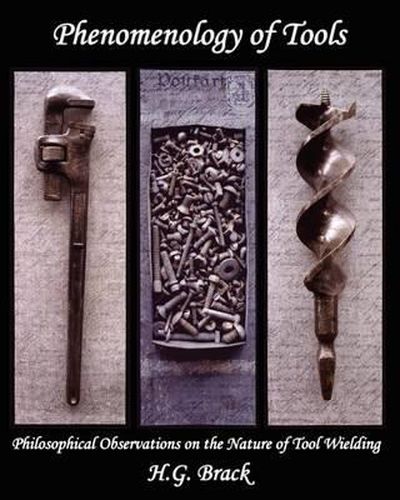Readings Newsletter
Become a Readings Member to make your shopping experience even easier.
Sign in or sign up for free!
You’re not far away from qualifying for FREE standard shipping within Australia
You’ve qualified for FREE standard shipping within Australia
The cart is loading…






The Phenomenology of Tools was written in the 1970s and first published in 1982. This second edition includes added photographs illustrating the poem, a new preface, and several appendices. In 1999, H. G. Brack became the curator of the Davistown Museum. His Curator’s Riff from the museum’s 2005 show catalog is reproduced as an appendix. It provides a less abstract synopsis of the phenomenology of tools, especially as experienced and presented by New England artists, toolmakers, and others in the permanent collection of the Davistown Museum. Using a poem by Philip Booth as a context in which to explore the show’s theme of the marriage of tools, art, and history, both the Curator’s Riff and the exhibition explicate a key element of the phenomenology of tools that is only briefly referenced in the first edition text, i.e. the joys of the convivial use of tools. From the simple joys of gardening to the subtle satisfactions of mechanics, machinists, artisans, and artists, an enduring lesson of forty years as a mooncusser (tool salvaging) is how much fun we have with our tools. Decades of observing the enjoyment that both tool customers and museum visitors express upon buying, owning, and using or viewing tools stand in contrast to the ominous legacy of our technological achievements.
$9.00 standard shipping within Australia
FREE standard shipping within Australia for orders over $100.00
Express & International shipping calculated at checkout
Stock availability can be subject to change without notice. We recommend calling the shop or contacting our online team to check availability of low stock items. Please see our Shopping Online page for more details.
The Phenomenology of Tools was written in the 1970s and first published in 1982. This second edition includes added photographs illustrating the poem, a new preface, and several appendices. In 1999, H. G. Brack became the curator of the Davistown Museum. His Curator’s Riff from the museum’s 2005 show catalog is reproduced as an appendix. It provides a less abstract synopsis of the phenomenology of tools, especially as experienced and presented by New England artists, toolmakers, and others in the permanent collection of the Davistown Museum. Using a poem by Philip Booth as a context in which to explore the show’s theme of the marriage of tools, art, and history, both the Curator’s Riff and the exhibition explicate a key element of the phenomenology of tools that is only briefly referenced in the first edition text, i.e. the joys of the convivial use of tools. From the simple joys of gardening to the subtle satisfactions of mechanics, machinists, artisans, and artists, an enduring lesson of forty years as a mooncusser (tool salvaging) is how much fun we have with our tools. Decades of observing the enjoyment that both tool customers and museum visitors express upon buying, owning, and using or viewing tools stand in contrast to the ominous legacy of our technological achievements.